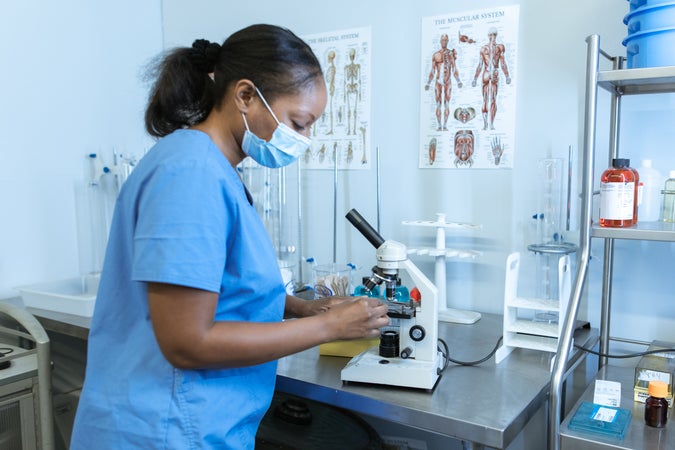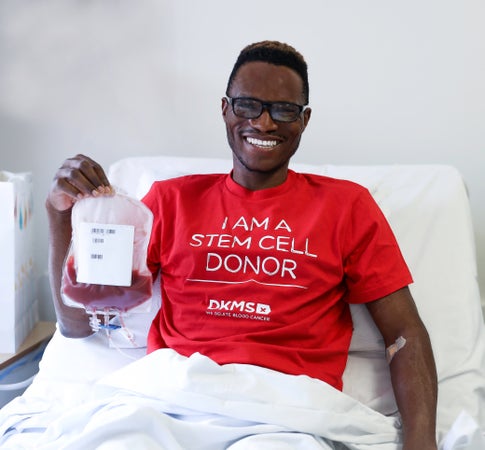
Updating your donor profile
Over the last few years, lab methods and evaluation processes have improved considerably. For us it is important to ensure that the typing profiles of our donors are always in line with the latest scientific standards. So, if you have been registered with DKMS for a longer period of time, you may be invited to provide us with a new sample to be typed again.
If we do ask you to update your donor profile, then we will send you a health questionnaire and a swab kit. This contains special medical swabs to swab the inside of your cheeks, along with exact instructions on how to use them. All you then need to do is to fill in the questionnaire and return it to us along with your cheek swab. That way, you will be doing your part to improve the chances of patients finding the best possible match. Your HLA markers or CMV status could be of interest for further typing.
Why did DKMS write to me but not to my family and friends?
Unfortunately, we can't invite everyone to provide a new sample to be tested at the same time, so we are writing to our donors in stages.
HLA – Support us by upgrading your donor profile
HLA stands for “human leucocyte antigen”. HLA markers are structures on cell surfaces and vary from person to person. They are more or less the “signature” of your cells and help your immune system to differentiate between your body’s own structures and foreign ones. HLA characteristics are crucial in determining the most suitable donor for a specific patient. The closer the match, the less likely the recipient’s immune system is to reject them, giving the transplant a greater chance to succeed.
For all new donors, our DKMS Life Science Lab currently types 24 different HLA markers in high resolution. If you have been registered with us for a long time, you may have signed up at a time when the importance of some HLA markers had not been fully recognized. This means that some information may be missing from your donor profile. In addition, typing methods may not have been as sophisticated back when you signed up, so we will need to improve the quality of your typing profile. Either way, we will ask you to update your data – because the better your typing profile, the more easily we can select you for a blood cancer patient. In addition, a profile that is up to the latest standard saves valuable time before a stem cell transplant – which could save a life.
CMV – Another test that saves lives
CMV stands for “cytomegalovirus”. In healthy people, a cytomegalovirus infection is usually symptom-free. Globally, between 30% and 90% of the population is CMV positive, meaning they have been infected at least once in their lives and therefore carry the virus. However, a CMV infection can cause life-threatening complications for patients in need of a blood stem cell transplant, who have weakened immune systems. A patient’s chances of survival are much higher if their CMV status is the same as that of the donor, so a match between the two can be crucial to the success of the treatment.
All new donors who register with DKMS are tested for CMV as part of the initial registration process. However, this was only possible due to a new and innovative approach developed by our DKMS Life Science Lab. This means that donors who have been registered with us for a longer period of time would not have been tested for CMV.
We are in the process of contacting donors whose CMV status is not in our system so that we can add this important information. By swabbing the inside of your cheek, you will be helping us to get the details we need to help find the best possible match for all patients.
If you have been pregnant, was your CMV status determined at that time?
If your CMV status was tested while you were pregnant, you will find the result in your maternity pass. Please send us a copy of the page showing the result. You can send it to bmt@dkms-africa.org or to the contact named at the top of the letter you received inquiring about your CMV status. We will then let you know if a further CMV test is needed.






